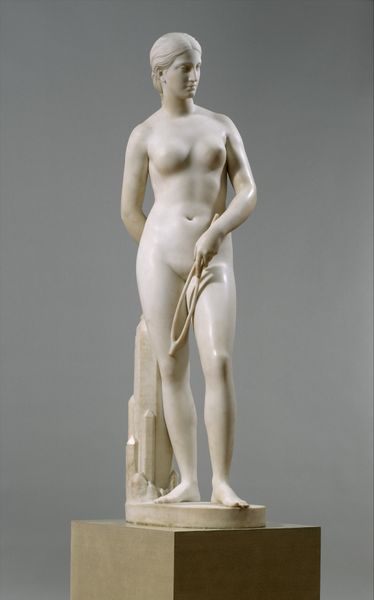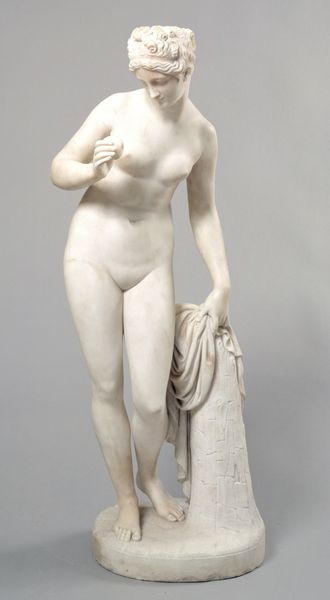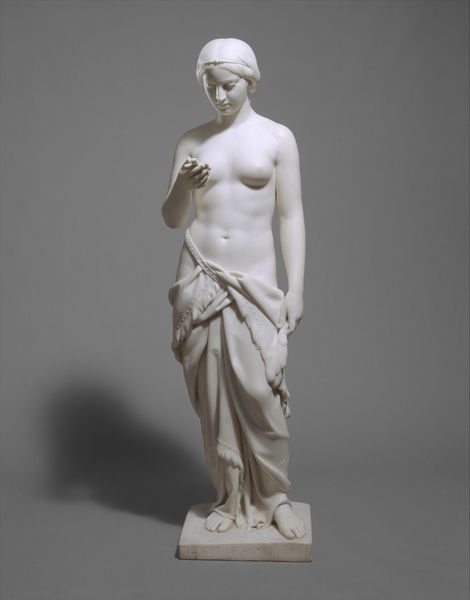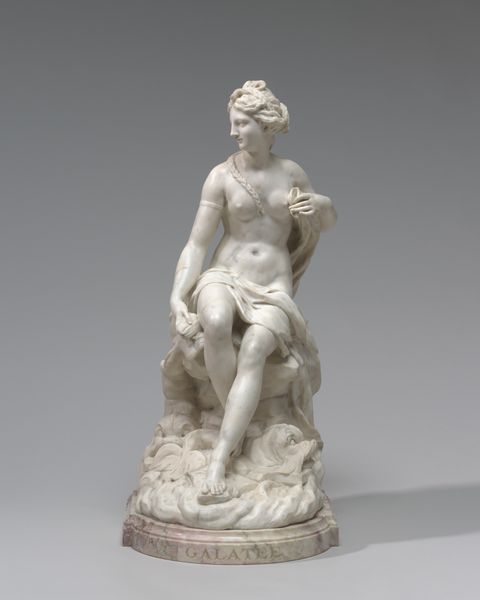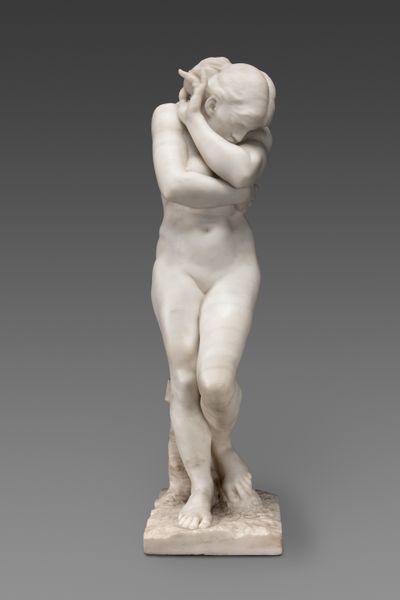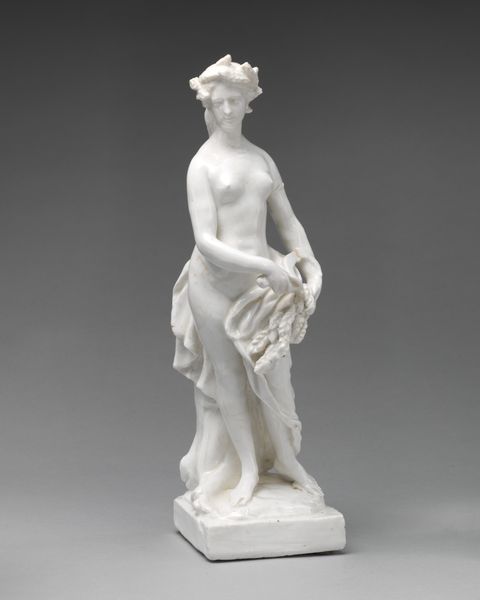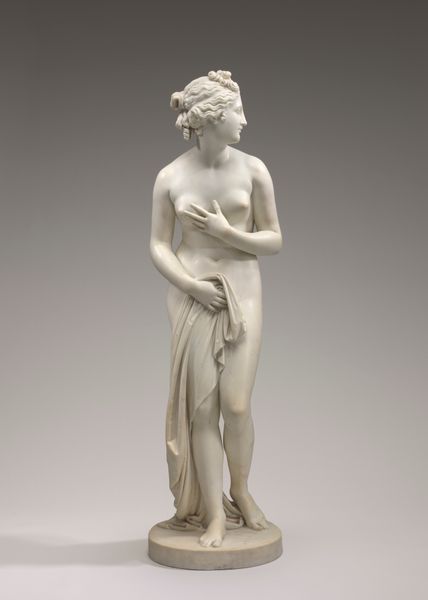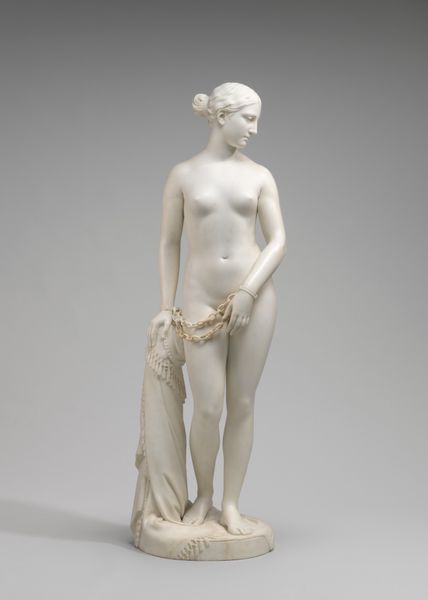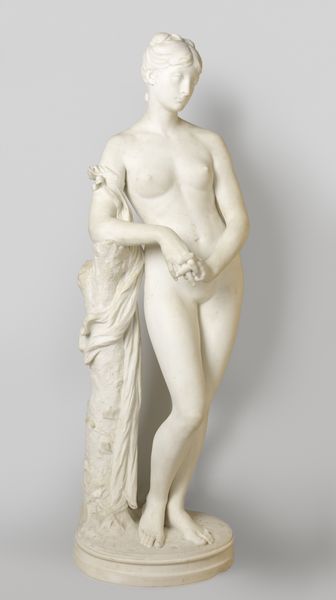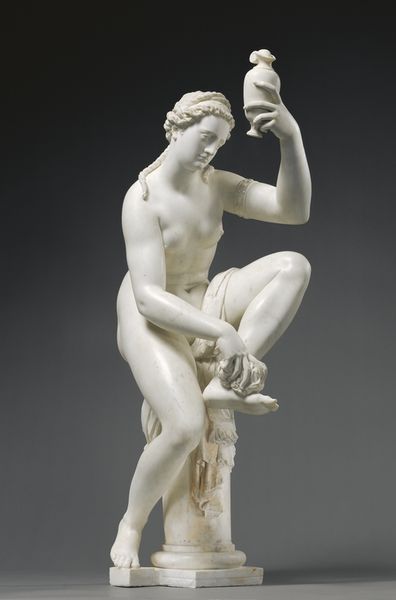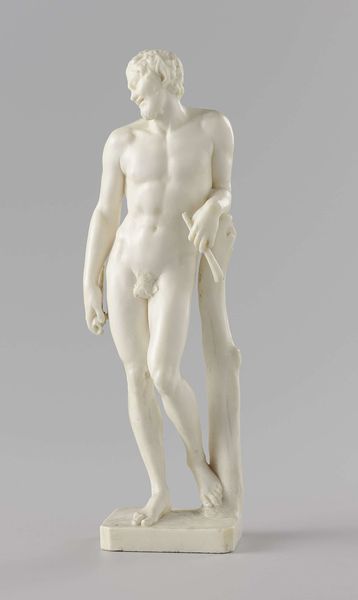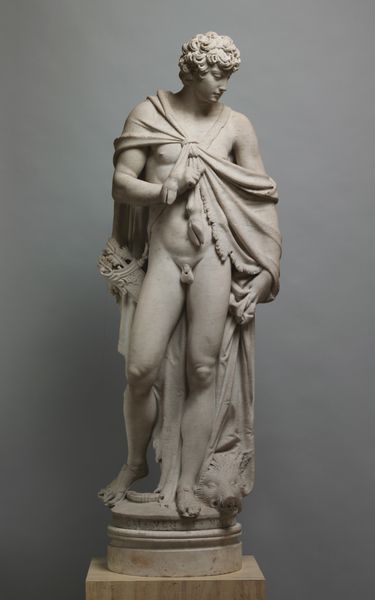
sculpture, marble
#
sculpture
#
figuration
#
female-nude
#
sculpture
#
academic-art
#
marble
#
nude
#
realism
Dimensions: 62 1/2 x 18 1/2 x 21 1/4 in. (158.8 x 47 x 54 cm)
Copyright: Public Domain
William Henry Rinehart carved this marble sculpture called Clytie in the 19th century. The cool, smooth surface invites touch, while the stone's weight gives the figure a sense of permanence. The making of this sculpture involves both artistic skill and physical labor. Rinehart would have begun by selecting a block of fine-grain marble from a quarry, likely in Italy, then used chisels, rasps, and polishers to reveal the figure within. The social context is also important. In Rinehart's time, sculpture was a high-status art, often commissioned by wealthy patrons. While he created the original clay sculpture himself, Rinehart employed skilled artisans to produce multiple marble copies to satisfy demand. Considering the sculpture this way—as a product of material, process, and social context—enriches our understanding of the sculpture, inviting us to reflect on the cultural values that shape our appreciation of art.
Comments
No comments
Be the first to comment and join the conversation on the ultimate creative platform.
